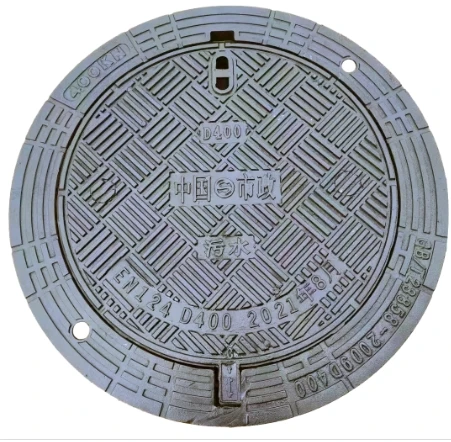- Afrikaans
- Albanian
- Amharic
- Arabic
- Armenian
- Azerbaijani
- Basque
- Belarusian
- Bengali
- Bosnian
- Bulgarian
- Catalan
- Cebuano
- China
- China (Taiwan)
- Corsican
- Croatian
- Czech
- Danish
- Dutch
- English
- Esperanto
- Estonian
- Finnish
- French
- Frisian
- Galician
- Georgian
- German
- Greek
- Gujarati
- Haitian Creole
- hausa
- hawaiian
- Hebrew
- Hindi
- Miao
- Hungarian
- Icelandic
- igbo
- Indonesian
- irish
- Italian
- Japanese
- Javanese
- Kannada
- kazakh
- Khmer
- Rwandese
- Korean
- Kurdish
- Kyrgyz
- Lao
- Latin
- Latvian
- Lithuanian
- Luxembourgish
- Macedonian
- Malgashi
- Malay
- Malayalam
- Maltese
- Maori
- Marathi
- Mongolian
- Myanmar
- Nepali
- Norwegian
- Norwegian
- Occitan
- Pashto
- Persian
- Polish
- Portuguese
- Punjabi
- Romanian
- Russian
- Samoan
- Scottish Gaelic
- Serbian
- Sesotho
- Shona
- Sindhi
- Sinhala
- Slovak
- Slovenian
- Somali
- Spanish
- Sundanese
- Swahili
- Swedish
- Tagalog
- Tajik
- Tamil
- Tatar
- Telugu
- Thai
- Turkish
- Turkmen
- Ukrainian
- Urdu
- Uighur
- Uzbek
- Vietnamese
- Welsh
- Bantu
- Yiddish
- Yoruba
- Zulu
снеж . 25, 2024 19:39 Back to list
ductile iron cast iron
The Versatility of Ductile Iron A Comprehensive Overview
Ductile iron, also known as spheroidal graphite iron or nodular cast iron, is a remarkable material that has gained immense popularity across various industries. Its unique properties stem from the addition of small amounts of magnesium during the casting process, which alters the structure of graphite within the iron and enhances its overall performance. This article will explore the characteristics, benefits, applications, and future potential of ductile iron.
Characteristics of Ductile Iron
Ductile iron exhibits a combination of strength, ductility, and toughness that is superior to that of traditional gray cast iron. The key feature of ductile iron is the presence of spherical graphite nodules, which provide the material with exceptional resistance to shock and impact. This configuration not only improves its tensile strength but also allows for significant deformation before fracture, making it less brittle than its gray counterpart.
The material typically has a tensile strength ranging from 400 to 900 MPa and a yield strength that can exceed 600 MPa. Furthermore, ductile iron can be easily cast into complex shapes, making it a preferred choice for manufacturers. Its good fluidity allows it to fill intricate molds, resulting in parts that require minimal machining.
Benefits of Ductile Iron
The advantages of ductile iron over other metals and alloys make it an attractive option for various applications. First and foremost, the material's high ductility enables it to absorb energy and resist failure under heavy loads. Additionally, ductile iron has excellent wear resistance, which is particularly beneficial in applications involving friction and abrasion.
Another significant benefit is its cost-effectiveness. Ductile iron is relatively inexpensive to produce compared to other high-strength materials. Its net shape casting capability reduces the need for extensive machining, further lowering production costs. Moreover, ductile iron components can often be recycled, making it an environmentally friendly option.
Ductile iron also performs well in a variety of environments, including those with high temperatures and corrosive conditions. This resilience extends its lifespan and reduces maintenance costs, making it suitable for industries where durability and reliability are paramount.
ductile iron cast iron

Applications of Ductile Iron
Due to its advantageous properties, ductile iron is utilized in a wide array of applications. One of the most common uses is in the production of automotive components, such as crankshafts, gears, and suspension parts. The automotive industry benefits from ductile iron's strength and lightweight characteristics, which contribute to improved fuel efficiency and performance.
In the construction sector, ductile iron is often used to manufacture pipes, fittings, and manhole covers, where resistance to bending and shock is crucial. These components are essential for infrastructure projects, ensuring the reliable transport of water and sewage.
The machinery industry also leverages ductile iron for producing durable parts in machines and equipment. Its ability to withstand dynamic loads makes it ideal for components that experience vibration and stress.
Moreover, the energy sector employs ductile iron for the production of wind turbine components, where strength and fatigue resistance are vital for performance and safety.
Future Potential of Ductile Iron
As industries continue to advance, the demand for high-performance materials like ductile iron will likely increase. Research and development efforts are focused on improving its properties further, such as enhancing corrosion resistance through alloying techniques or composite formulations. Additionally, the adoption of advanced manufacturing techniques, including additive manufacturing, could unlock new possibilities for ductile iron's application.
In conclusion, ductile iron stands as a versatile and robust material with a wide range of applications across various industries. Its unique combination of strength, ductility, and cost-effectiveness continues to make it a favored choice among manufacturers. As technology evolves, the future of ductile iron looks promising, paving the way for innovative uses and enhanced performance in the global marketplace. Whether in automotive, construction, or energy sectors, ductile iron's role will undoubtedly be significant in the years to come.
-
Durable Cast Iron Water Main Pipe | AI-Optimized Design
NewsAug.05,2025
-
8mm Thin-Walled Cast Steel Manhole Cover Pallet Bottom Ring | Durable
NewsAug.04,2025
-
Premium Cast Iron Water Main Pipe: Durable, Corrosion-Resistant
NewsAug.03,2025
-
Durable Cast Iron Water Mains | AI-Optimized Systems
NewsAug.02,2025
-
High-Efficiency Propane Boiler for Baseboard Heat | Save Energy
NewsAug.01,2025
-
Premium Source Suppliers for Various Gray Iron Castings
NewsJul.31,2025


